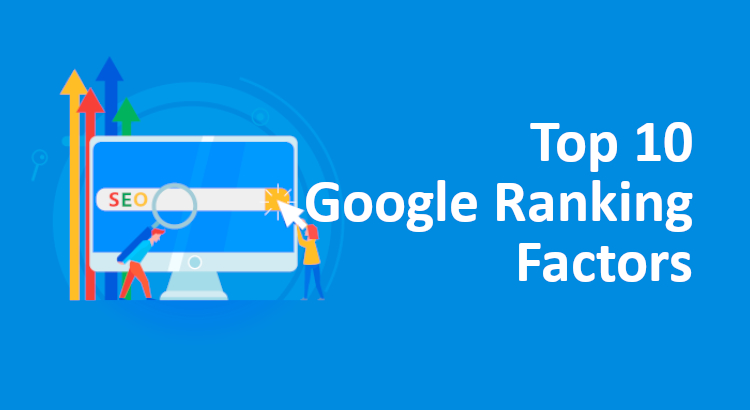Achieving high online visibility depends on your ability to understand and use the top Google ranking factors. This guide walks you through the essential factors and reveals how to improve your website’s position in Google search results. Let’s examine the comprehensive list of the top 10 Google ranking factors that will influence your success online.
Related Article: How to Rank Higher on Google by Using SEO Techniques
List of Top Google Ranking Factors
1. Quality Content
Compelling and relevant content remains at the forefront of Google’s priorities. High-quality, informative, and engaging content not only attracts visitors but also signals to search engines that your site is authoritative and deserves a higher ranking. Consider leveraging content writing services to get quality content.
Useful Article: Content Quality vs. Quantity: Striking the Right Balance
2. Keyword Placement
Strategic keyword insertion enhances SEO. Optimize your content by placing keywords in crucial areas for maximum visibility and ranking success.
- Title Tag (Meta Title): The title displayed on SERP; integrate target keywords for better search engine recognition.
- H1 Title: The main title visible on the webpage; ensure keyword inclusion for relevance and clarity.
- H2 Headings: Include keywords in at least two subheadings for improved content organization and keyword reinforcement.
- URL: Keep your URL concise and keyword-rich to enhance search engine understanding and user-friendly navigation.
- Naturally in the Body: Integrate keywords naturally within the content, especially within the first 100 words, for improved search relevance.
- Meta Description: Craft a compelling meta description with keywords summarizing the page. Though not always used, it entices clicks and enhances search visibility.
Related Article: The Art of Crafting Click-Worthy Meta Descriptions for SEO Success
3. Image Optimization
Optimizing images with descriptive alt tags and appropriate file sizes not only improves user experience but also contributes to SEO. Well-optimized images can boost your site’s performance in image searches and overall search rankings.
- Assign Alt Text: When optimizing images, provide concise and descriptive alt text containing relevant keywords. This not only enhances accessibility for visually-impaired users but also helps Google understand the image’s content for improved search rankings.
- Compress and Resize: Utilize image compressors like TinyPNG to keep file sizes between 70-100KB. Saving images as JPG and limiting width to 1,000px reduces loading times, enhancing page speed and user experience.
- Add Value: Elevate your content by avoiding generic stock images. Instead, use screenshots, charts, and illustrations to convey concepts. This not only enhances content quality but also keeps users engaged for longer periods.
- Include the Keyword: Integrate the target keyword not only in the alt text but also in the image file name. Replace spaces with dashes to prevent unwieldy ” %20″ in the file name, ensuring a trustworthy and SEO-friendly image link in your CMS.
Learn More: Image Optimization in SEO: Tips and Best Practices for Better Ranking
4. URL Structure
A clean and organized URL structure is essential for both users and search engines. Clear, concise URLs that reflect the content hierarchy make it easier for search engines to index and understand your site’s structure.
5. Page Speed
In the fast-paced digital landscape, page speed is critical. Google values quick-loading websites, considering it a positive user experience factor. Optimize your site’s performance to ensure faster load times and improved rankings.
Read More: How Important Is Page Speed for SEO?
6. Mobile-Friendliness
With the prevalence of mobile browsing, Google prioritizes mobile-friendly websites. Responsive design and a seamless mobile experience contribute significantly to higher search rankings, reflecting Google’s commitment to user satisfaction across devices.
7. Core Web Vitals
Google’s Core Web Vitals focus on user experience metrics like page loading, interactivity, and visual stability. Prioritizing these factors not only improves user satisfaction but also aligns with Google’s criteria for ranking websites.
- Largest Contentful Paint (LCP): LCP measures primary content load time. Optimize with lazy loading, code minification, and image compression for user-friendly speed.
- First Input Delay (FID): FID measures initial user interaction response time. Enhance by efficient coding, script minimization, and prioritized resource loading.
- Cumulative Layout Shift (CLS): CLS checks visual stability for layout shifts. Mitigate with lazy loading, code minification, and popup management for smoother browsing.
8. Site Architecture
A well-structured site architecture enhances navigation and user experience. Logical organization, clear internal linking, and a user-friendly sitemap contribute to better indexing and improved visibility in search engine results.
9. Site Security
Google places importance on secure websites. Implementing HTTPS encryption not only ensures data integrity and user security but also serves as a positive signal for search engines, potentially boosting your site’s ranking.
Related Article: The Importance of Cybersecurity in SEO
10. Backlinks
High-quality backlinks from authoritative sources signal to search engines that your content is valuable and trustworthy. Building a strong backlink profile remains a fundamental aspect of SEO for improved search rankings. Employing link-building services lets you earn quality backlinks to strengthen your online presence.
Learn More: 200 Google Ranking Factors to Boost Your Website’s Performance
Final Thoughts on Top 10 Google Ranking Factors
Learning the top 10 Google ranking factors is a dynamic and ongoing process. You may improve your website’s visibility and successfully navigate the ever-changing online search landscape by giving priority to components like high-quality content, optimal site performance, and efficient SEO methods.


